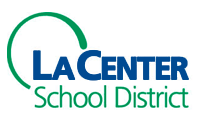Policy 6701P
Procedure - Recess and Physical ActivityRecess
By no later than the 2024–2025 school year, the district will provide at least thirty minutes of recess for all elementary-school students each school day that exceeds five hours. Schools may provide additional recess time before or after the school day, but that time may not be counted toward the thirty minutes of recess that is required.
Recess must be supervised and student-directed. It must aim to be safe, inclusive, and high quality. To achieve those aims, schools will offer opportunities that align with state and national recess recommendations and maintain safe and age-appropriate equipment to use during recess. Schools may also include organized games as part of recess, but they should avoid including or permitting students to use computers, tablets, or phones during recess. Whenever possible, recess should be held outside. But if recess is held indoors, schools should use an appropriate space that promotes physical activity.
Recess will complement, not substitute for, physical education class.
Schools should not withhold recess as a form of discipline unless a student’s participation in recess poses an immediate threat to the safety of the student or others. Nor should schools withhold recess to compel students to complete academic work. Schools should develop alternatives to withholding recess as a form of discipline or as a way to compel students to complete academic work.
Physical Activity in Schools
Given that middle and high school students do not have recess, the district will encourage physical activity breaks for middle and high school students. All schools will participate in a Comprehensive School Physical Activity Program. A Comprehensive School Physical Activity Program (CSPAP) is a multi-component approach by which school districts and schools use all opportunities for students to be physically active, meet the nationally-recommended 60 minutes of physical activity each day, and develop the knowledge, skills, and confidence to be physically active for a lifetime. A CSPAP reflects strong coordination and synergy across all the components: quality physical education as the foundation, physical activity before, during, and after school, staff involvement, and family and community engagement.
Quality Physical Education
Schools will implement a physical education program that includes instruction and practice in a variety of motor skills and movement patterns; knowledge of concepts, principles, strategies, and tactics related to movement and performance; knowledge and skills to achieve and maintain a health-enhancing level of physical activity and fitness; responsible personal and social behavior that respects self and others; and values physical activity for health, enjoyment, challenge, self-expression, and social interaction.
Physical Activity during the School Day
The district recognizes that students are more attentive and ready to learn if provided with periodic breaks when they can be physically active or stretch. Schools will encourage teachers to do the following:
- Incorporate movement and kinesthetic learning approaches into “core” subject instruction when possible (e.g., science, math, language arts, social studies and others) and do their part to limit sedentary behavior during the school day.
- Provide short (3-5-minute) physical activity breaks to students during and between classroom time. These physical activity breaks will complement, not substitute, for physical education class, recess, and class transition periods.
Schools cannot use physical activity during the school day as punishment. For example, a school can’t have a student run laps or do push-ups as a form of punishment.
Physical Activity Before and After School
The district offers opportunities for students to participate in physical activity either before and/or after the school day.
Active Transport
The district will identify safe and active routes to and from school to promote alternative transport methods for children, such as walking and bicycle programs. The district will encourage this behavior by engaging and promoting activities such as the following:
- Designation of safe or preferred routes to school;
- Promotional activities such as participation in International Walk to School Week, National Walk and Bike to School Week;
- Secure storage facilities for bicycles and helmets (e.g., shed, cage, fenced area);
- Instruction on walking/bicycling safety provided to students;
- Promotion of safe routes program to students, staff, and parents via newsletters, websites, local newspaper;
- Use of crossing guards;
- Ensuring crosswalks exist on streets leading to schools;
- Documentation of the number of children walking and/or biking to and from school; and
- Creation and distribution of maps of the school environment (e.g., sidewalks, crosswalks, roads, pathways, bike racks, etc.).
School District Facilities
Access to school sites will be provided through permitting use of facilities to community youth sports groups consistent with the district’s facilities use policy, community college, and municipal joint use agreements and partnerships with youth organizations so additional opportunities are available for all youth in the community to participate in quality physical activity, fitness, sports, and recreation programs.
Originally adopted as part of procedure 6700P on July 24, 2018
La Center School District
Adoption Date: June 25, 2024
Classification: Essential
